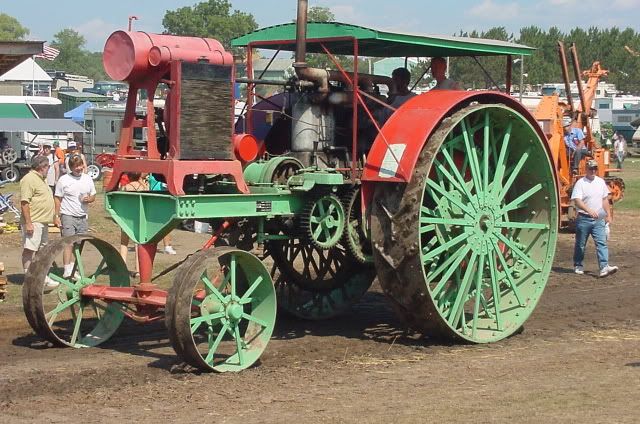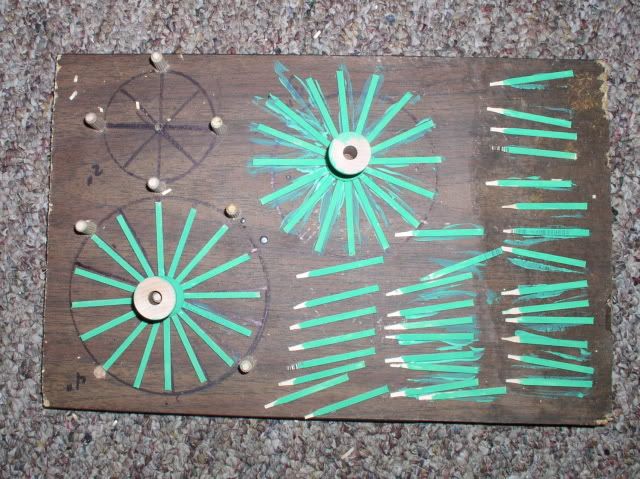Every once in a while the topic of the lack of ‘suitably’ sized detail items comes up. Or the lack of detail and/or selection on those that are… Just to prove it could be done, I’m building a farm tractor. With stock shapes, and as few castings as possible. The prototype I picked was the Kinnard ‘Flour City’ manufactured mostly unchanged from 1909-1927. I find it visually interesting (cluttered), while still simple (once you break it down into steps…). Plus, from new to derelict to restored, it could be found during the period(s) most of us model. I chose to build the 40-70 (40hp drawbar, 70hp on the belt) version mostly because, well it’s huge. And it could stand in for a 30-50 on a 1:20 layout with no changes, should I decide to sell one.

First step, rear wheels… 4" pvc drain pipe for the rims, a 7/8" wood spool for the hub, 64 1-27/32" wood spokes, and a pair of $4 nylon r/c helo rotor gears…

laying out the spokes, kind of tedious, especially when you bump ONE and have to reset them half way around

I found it easiest to set the spokes, smear glue on the hub face, and carefully lower it down the pin. This will work to build wagon wheels for you 1870’s guys too…

I decided it would be easier to paint the inside part now. I’m using a paler shade of green than the prototype to simulate sun faded paint.

Rims and bull gears, yes the style is wrong, the 6 spoke ones were $12.99

2nd row of spokes, bull gear installed, and an almost finished wheel. I need to add some track nail “rivets” where the spokes are attached to the hub, and a bit of coffee stirrer for the butt joint where the ends of the boilerplate rims were joined. As much as I dig those Y-shaped cast cleats, the jury is still out on actually modeling them.


